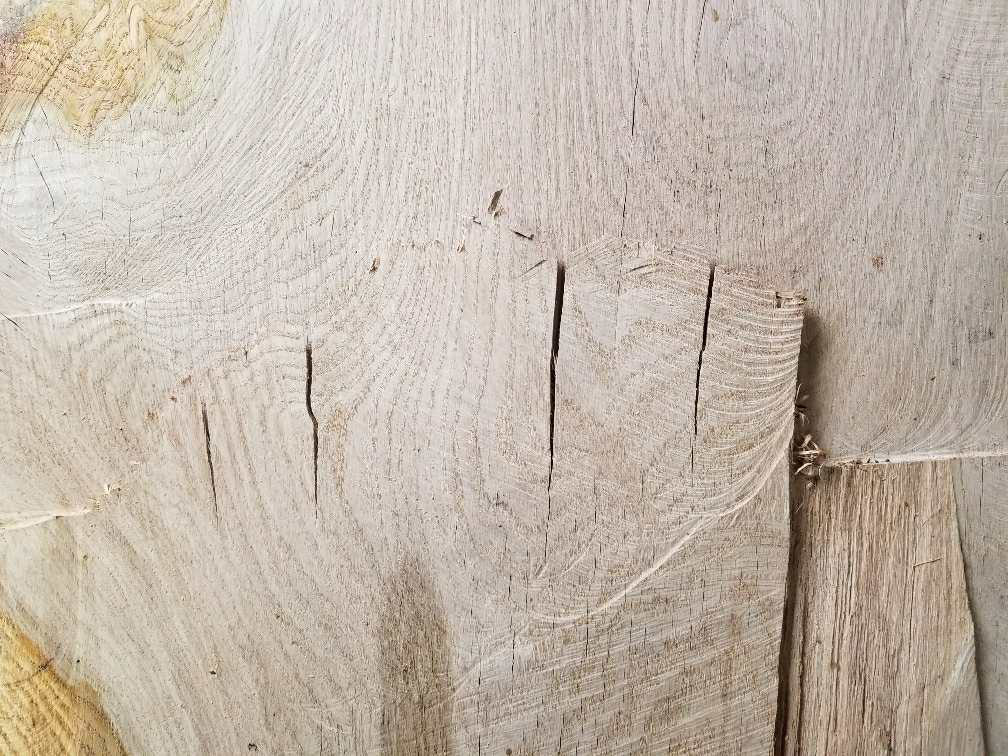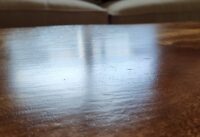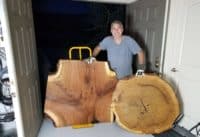Air Drying Live Edge Crotch Feather
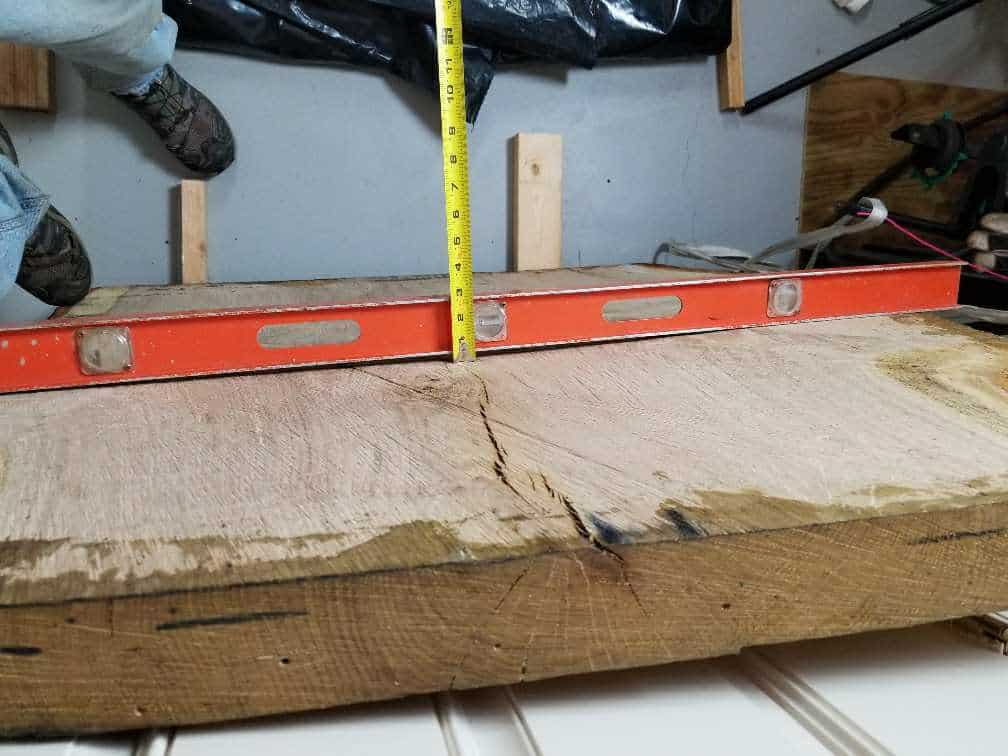
Good reminder to always rotate when drying wood. This branch / crotch feather piece warped 1/2″ in the first “critical” 10 days. This is when most of the moisture is escaping. I couldn’t rotate because I was out of town. Hopefully, I can correct it by rotating and letting it suck back the other direction.
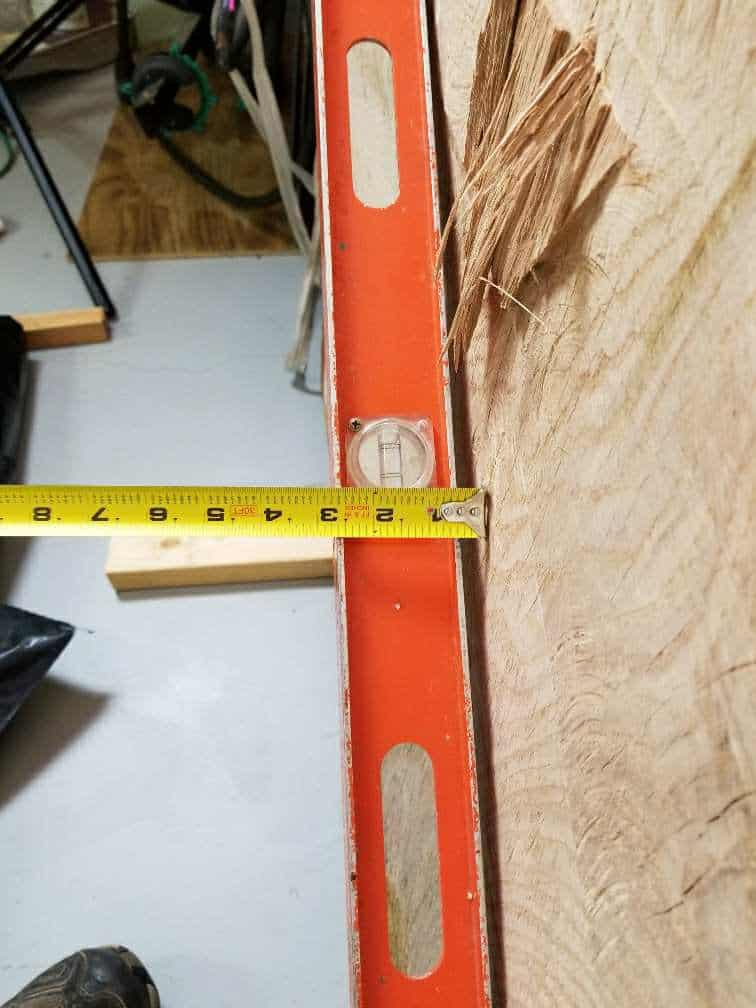

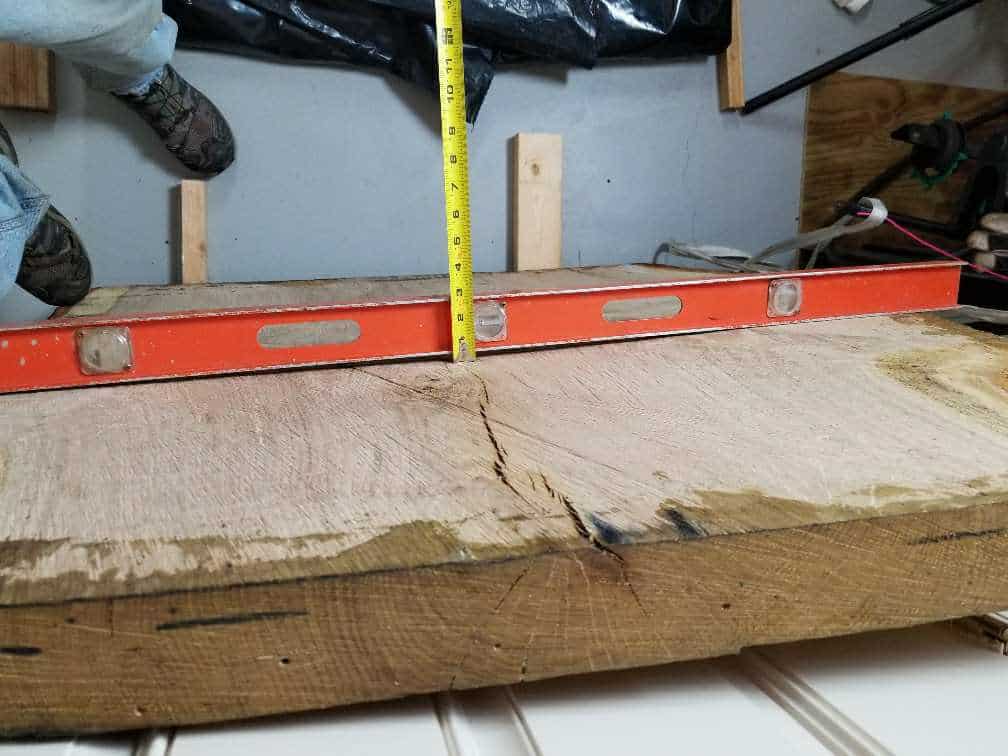
Notice how the lumber always curls toward the side that gets the most airflow. This is due to shrinkage, cause by the vacancy of moisture. As the water evaporates, the lumber has less volume and shrinks. As it shrinks it contracts and since the opposite side contracts less, tensions cause it to warp.
Even Exposure To Airflow On All Sides is Best
It’s always best to provide even airflow to all sides. However, this sometimes proves difficult, as with this 48″ diameter 3″ thick slab – and not enough room in my shop.
Here’s another example of shrinkage. This thin layer of wood was a result of my chain saw bar not being long enough to reach all the way though with one single cut. I had to approach it form all sides, while using my chainsaw mill. and this was where the bar met. The contracting of the thinner wood caused it to pull and split, because the thicker surrounding wood, is drying slower, thus contracting less. Thinner wood contracts more because it dries out faster that thicker wood.

